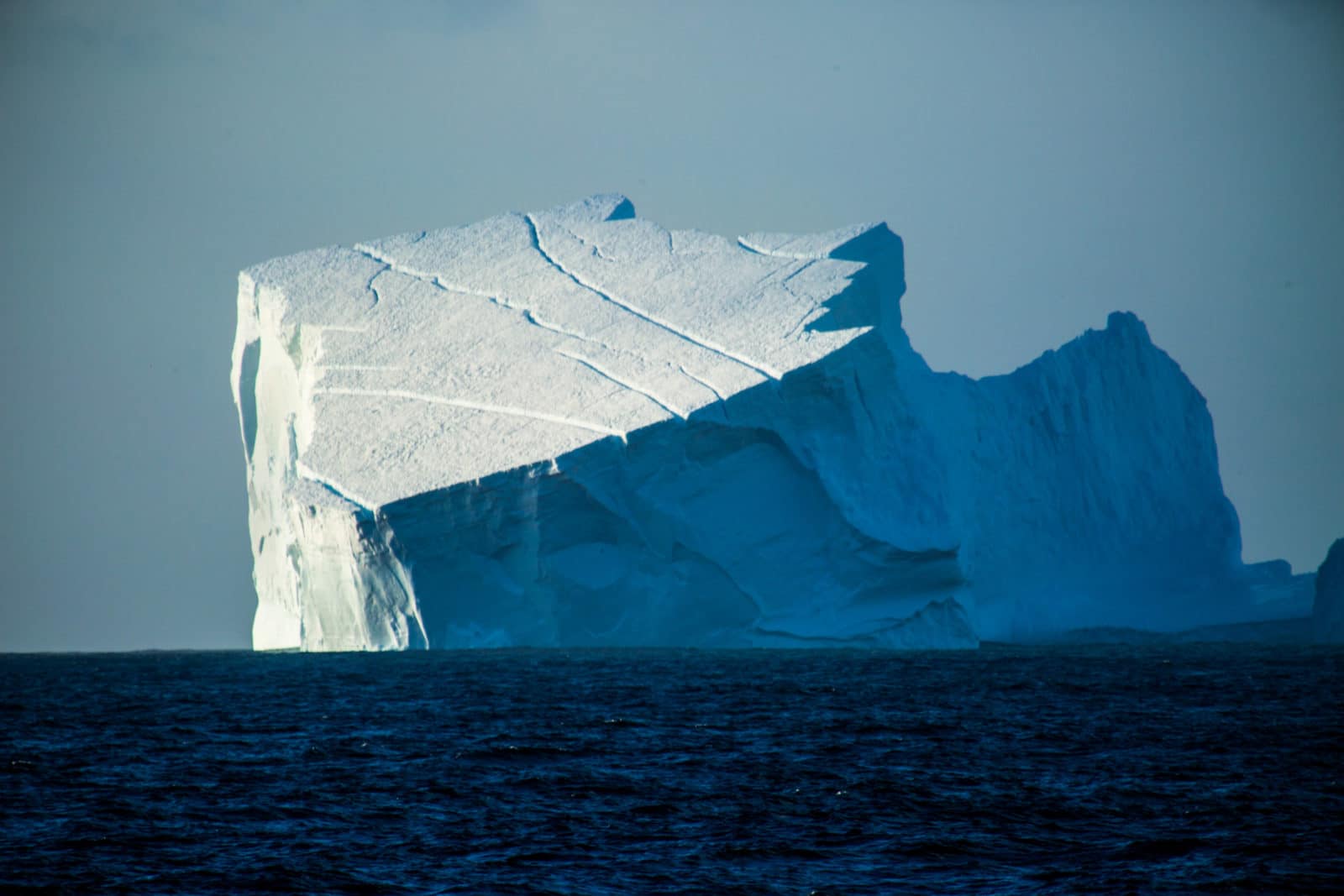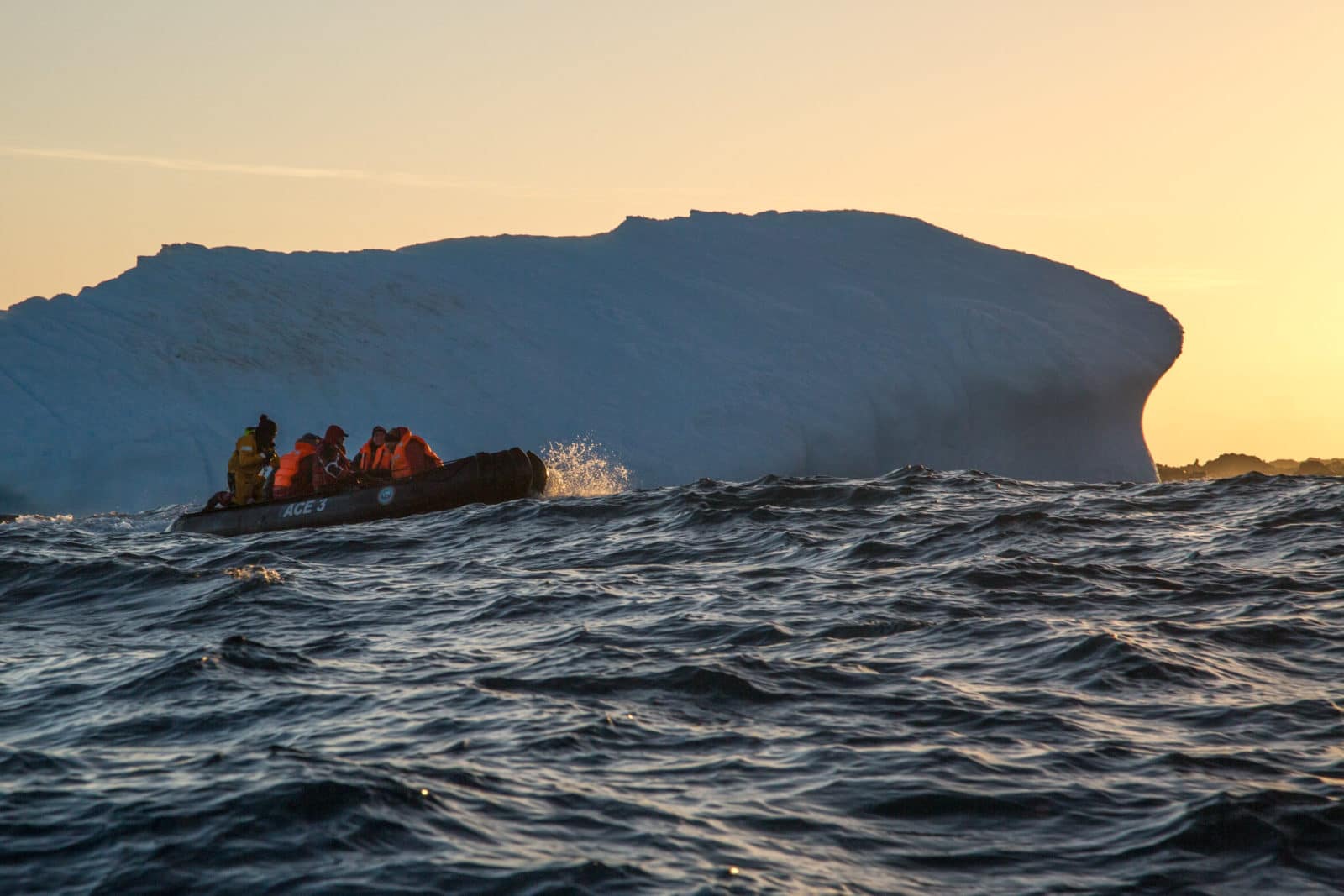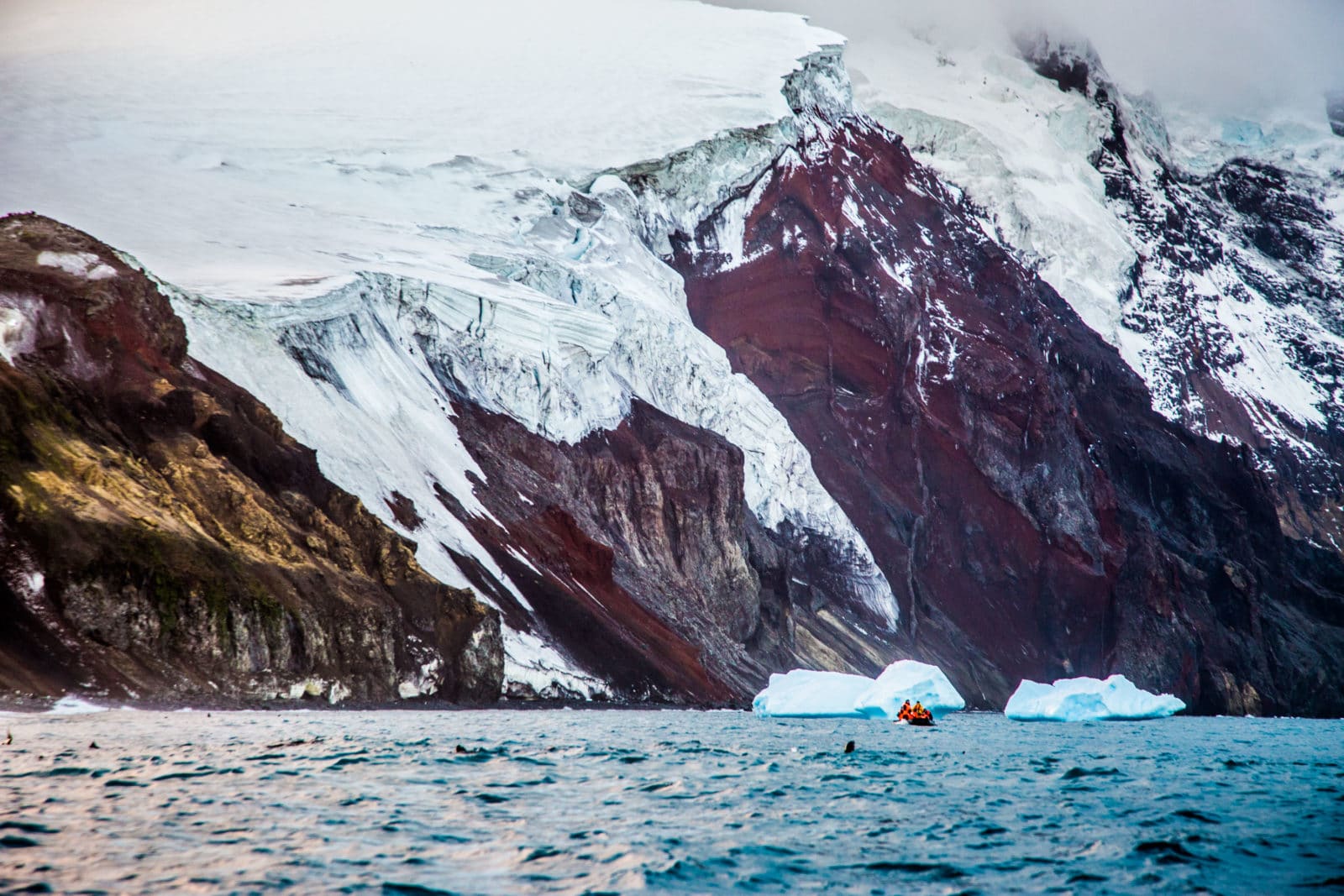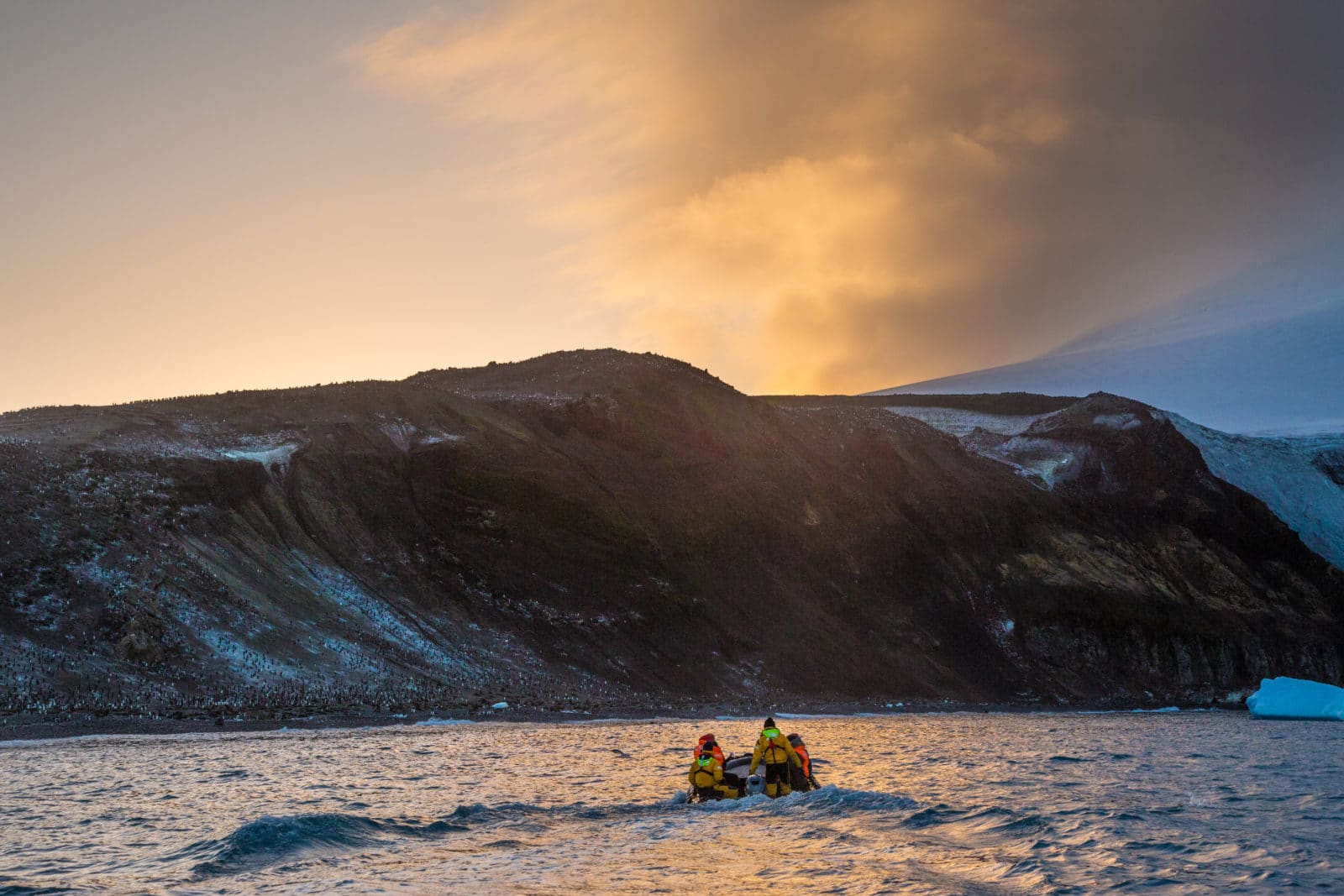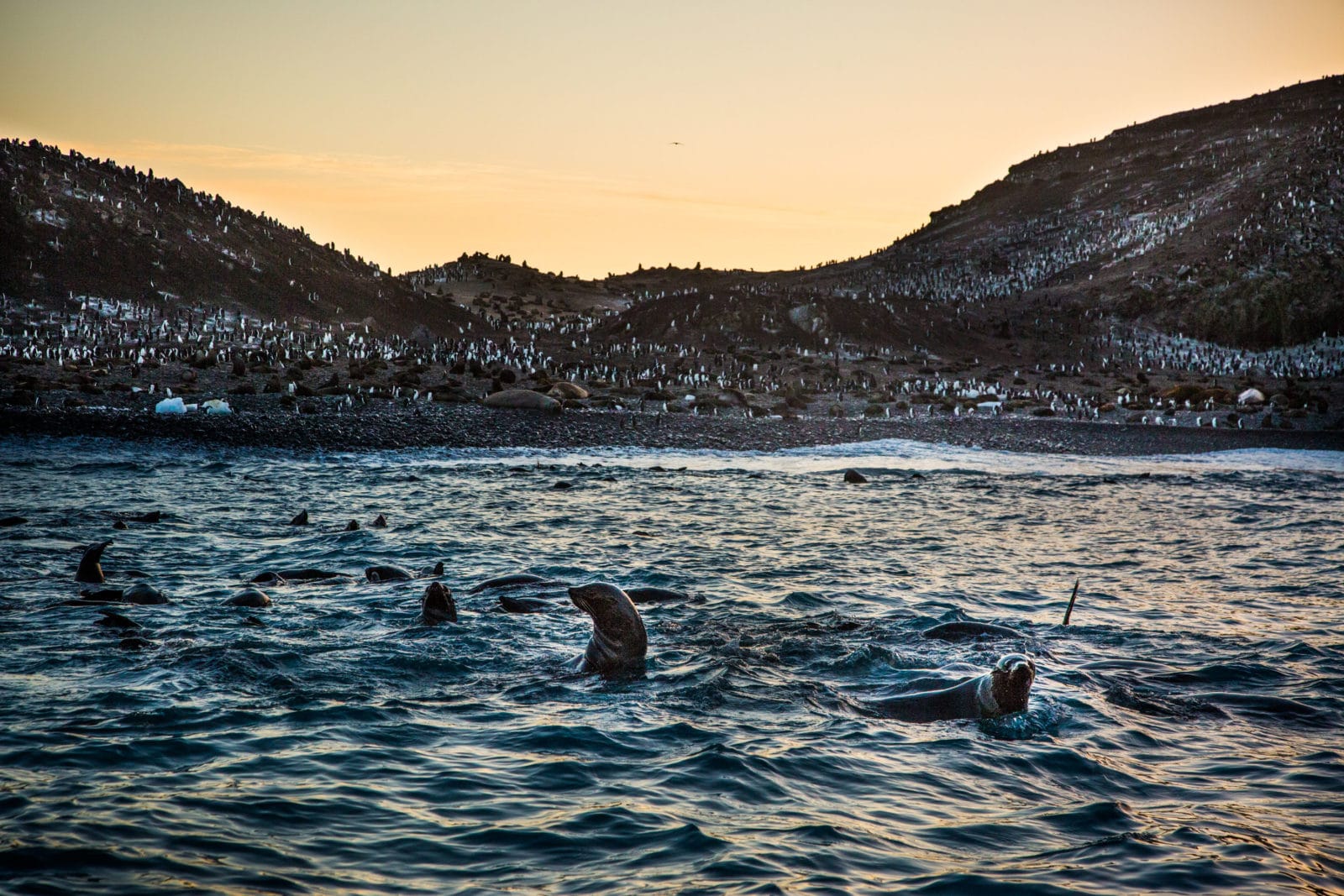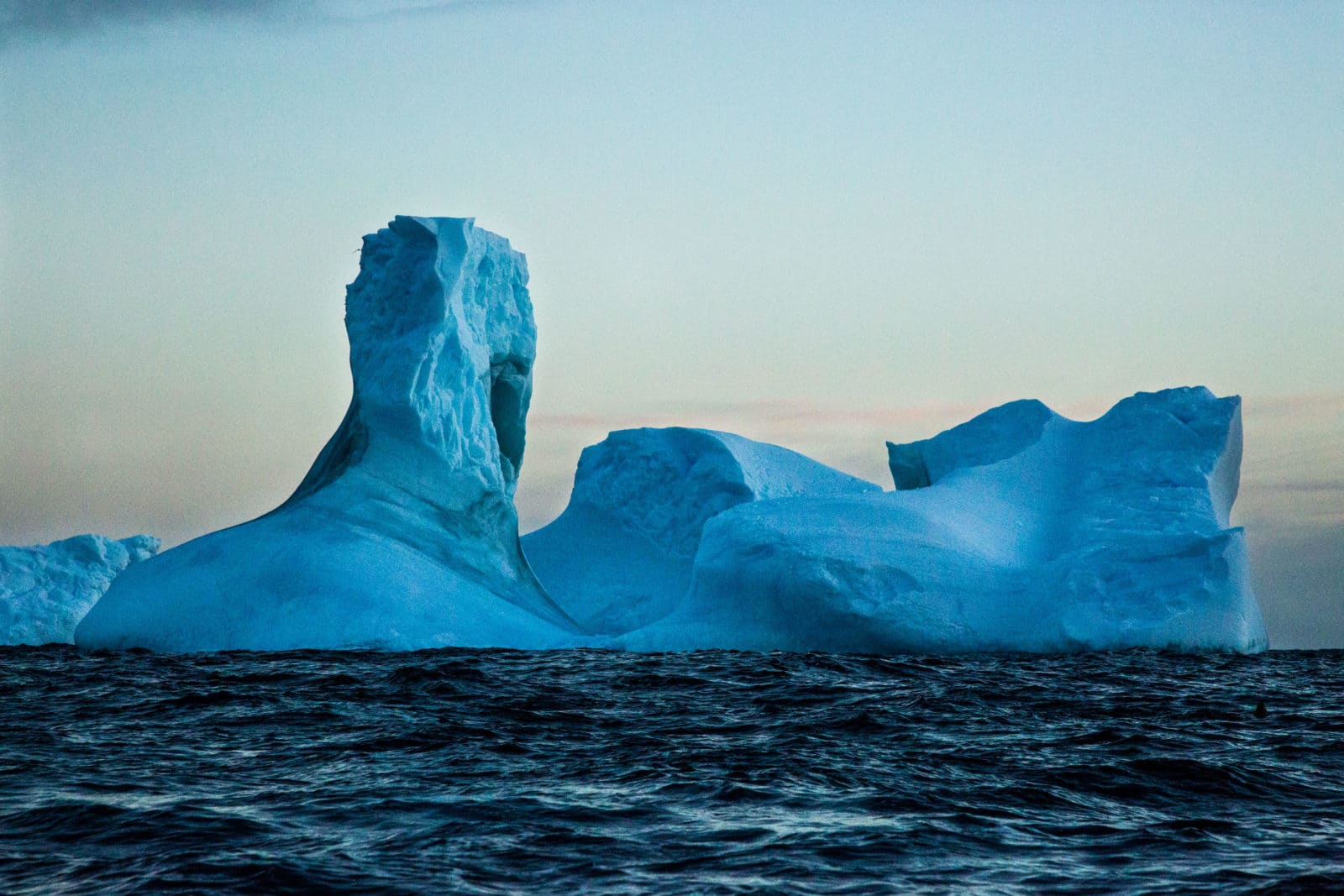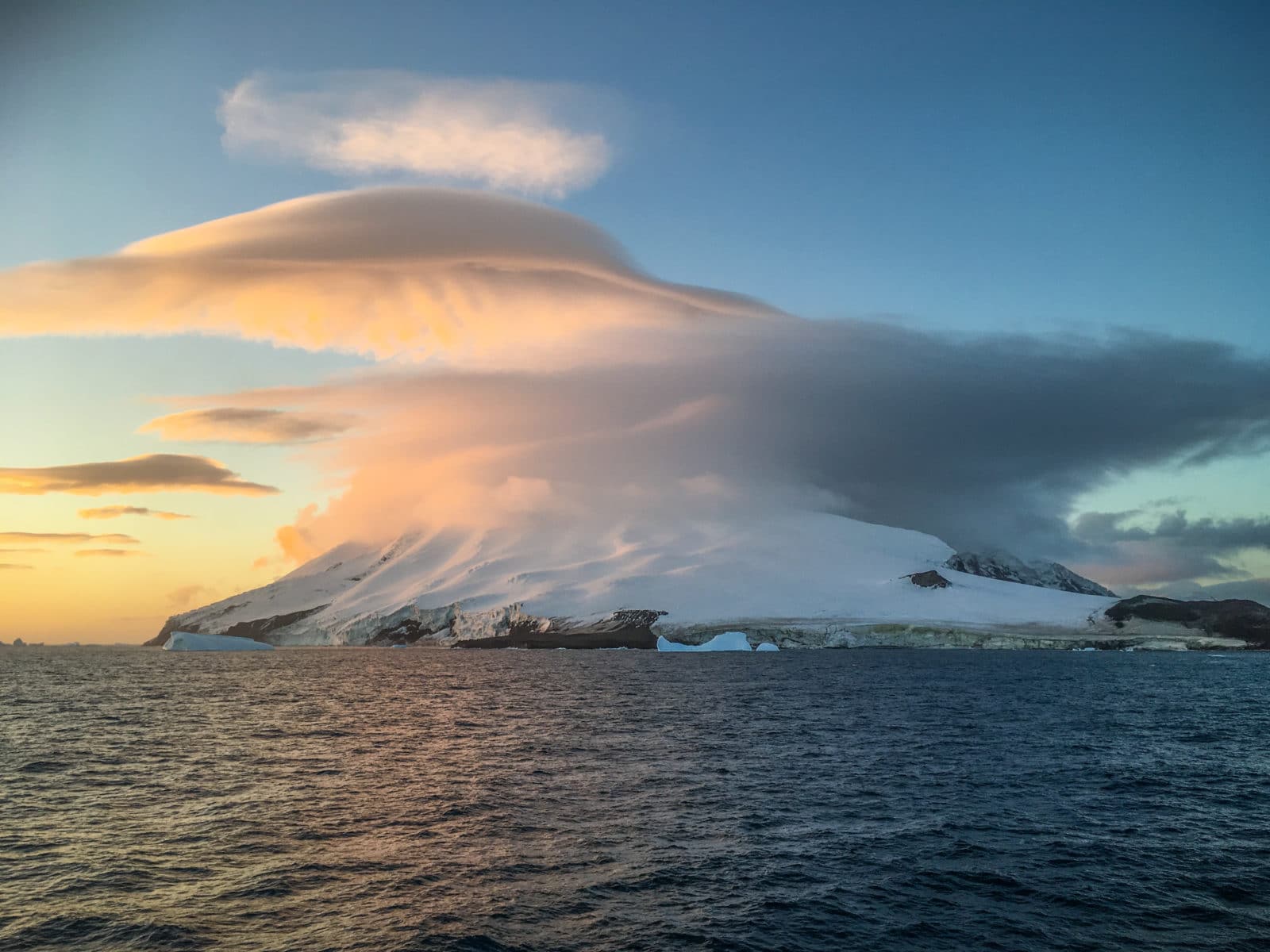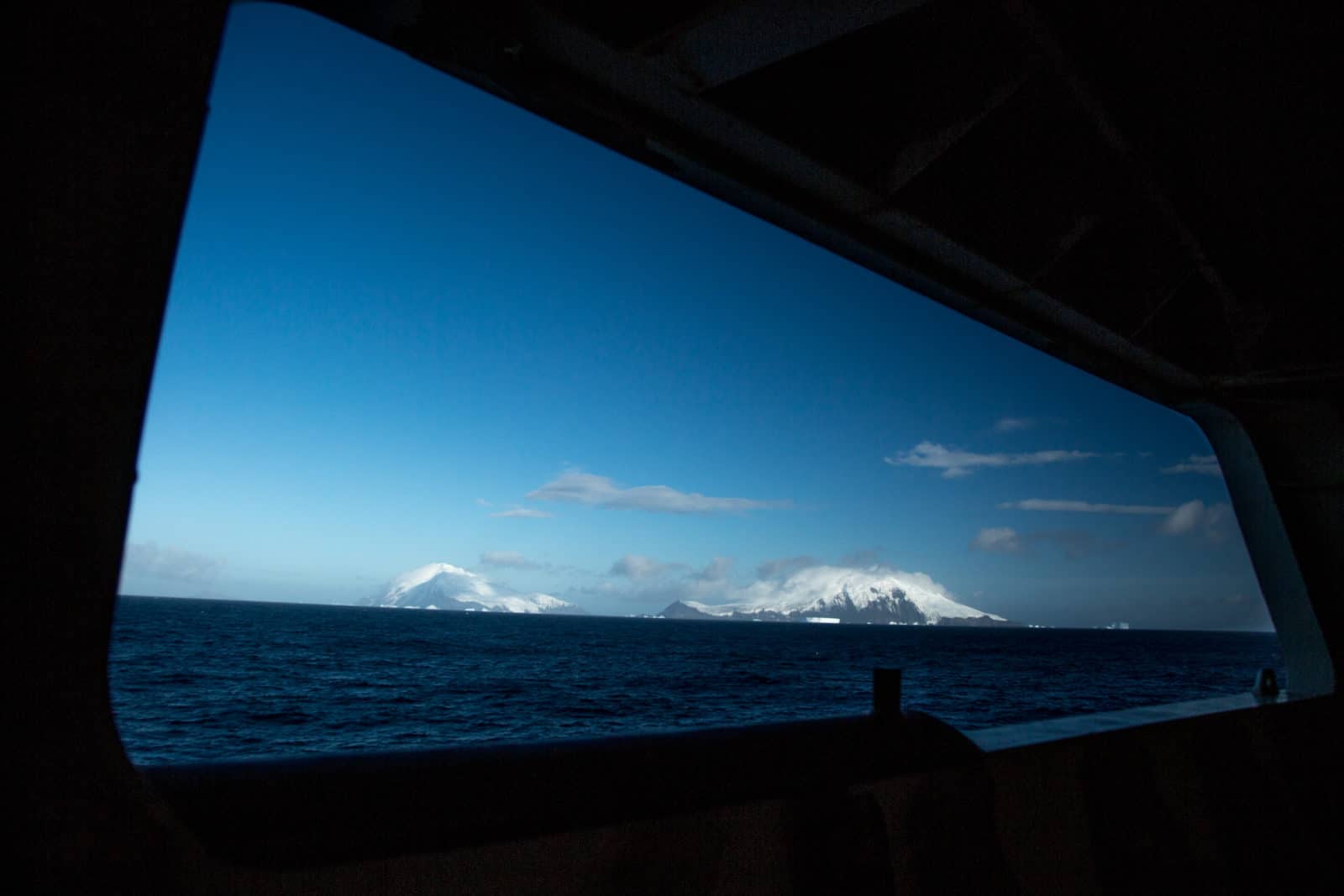
Into the Wild Sandwich Islands

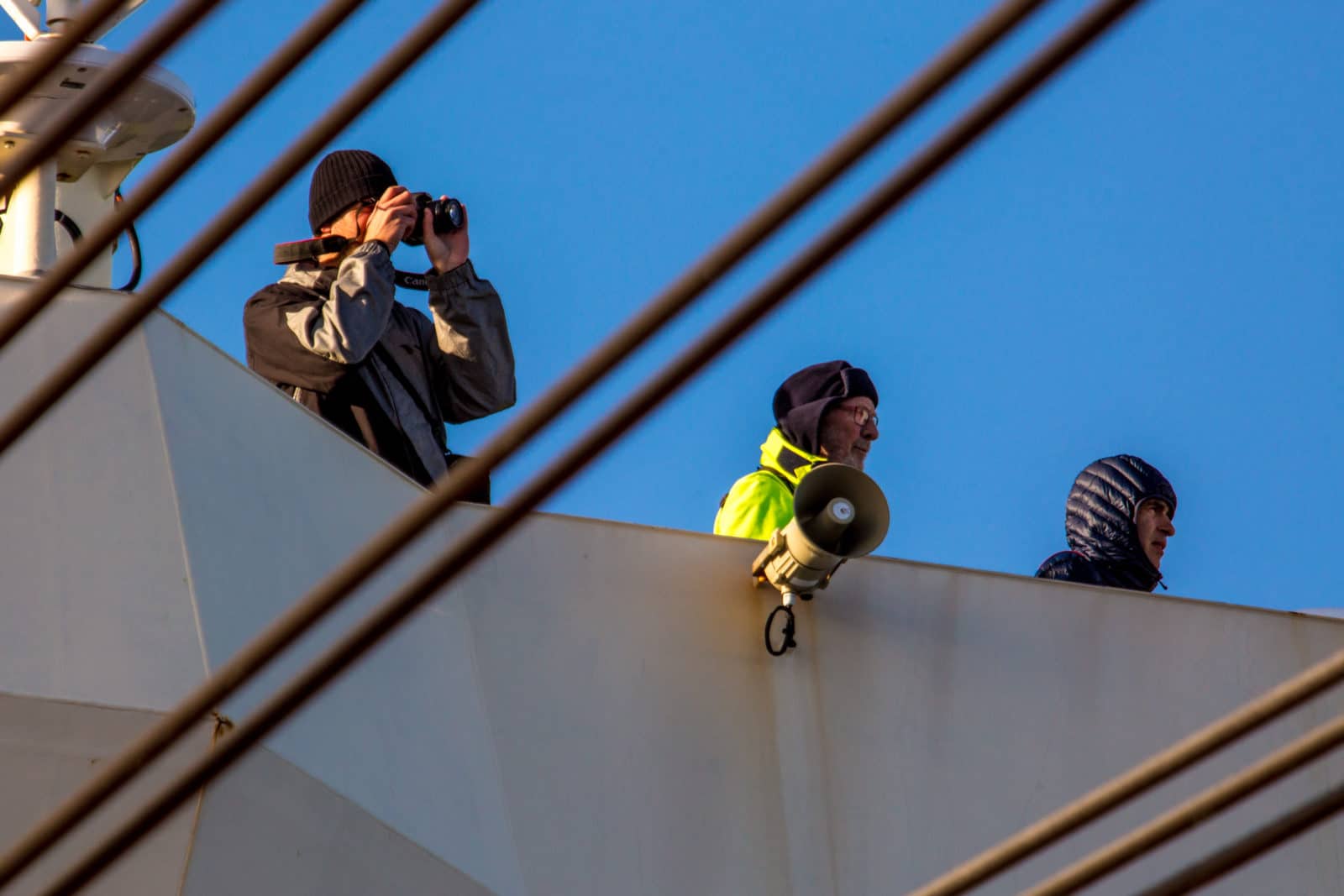


The southernmost visit of Leg 3, the South Sandwich Islands are located on the 59th parallel, a few km’s from South Georgia. Discovered between 1775 and 1819, they’re composed of 11 uninhabited, volcanic islands. Like South Georgia, the South Sandwich Islands is a British overseas territory.
Without permits, the ACE team could not land by helicopter on these wild, desolate islands to sample ice cores and biological specimens. However, three lucky groups jumped into zodiacs and approached the coast at sunset. The sea was angry and waves crashed onto the vessels as a wildlife spectacle began. A massive concentration of chinstrap penguins, fur seals and elephant seals covered the cliffs and beaches. UFO-like clouds hovered beyond the peaks as we returned to the Treshnikov. A treacherous jump back onto the ship’s ladder brought us home safe & sound.
Situées au 59e parallèle, les îles Sandwich du Sud nous emmènent au point le plus bas du leg 3. Découvertes entre 1775 et 1819, elles sont composées de onze îles volcaniques inhabitées. Comme la Géorgie du Sud, les Îles Sandwich du Sud est un territoire britannique d’outre-mer.
Faute de permis, l’équipe d’ACE n’a pu atterrir par hélicoptère. Mais trois groupes chanceux ont pu explorer la côte en zodiac au coucher du soleil. Furieuse, la mer a rendu la tâche ardue, mais un véritable spectacle animal nous attendait: une concentration massive de manchots jugulaires, d’otaries et d’éléphants de mer peuplent ces îles sauvages. Comme des ovnis, les nuages flottaient au-dessus des sommets lors de notre retour périlleux au Treshnikov. Dans une houle intense, nous avons dû sauter agilement sur l’échelle pour retrouver le navire.
Text: Sharif Mirshak
